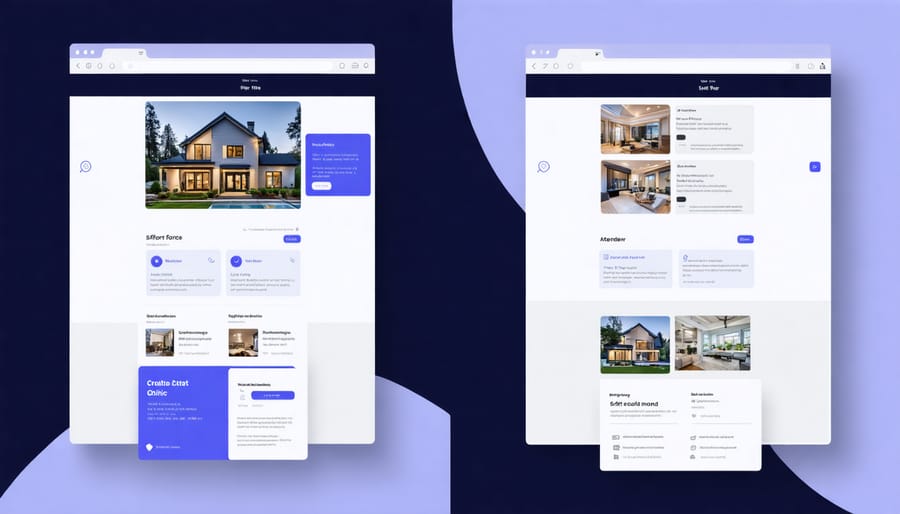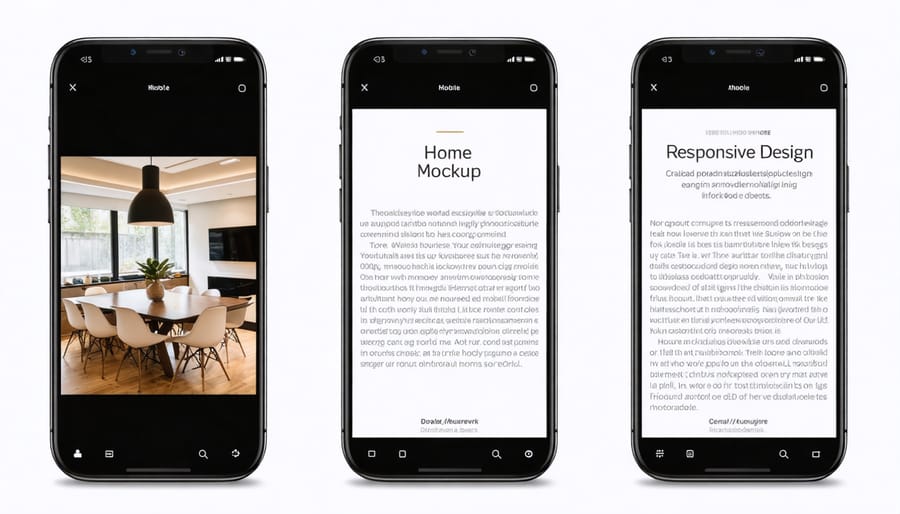Elevate your website’s user experience through expert UX reviews that systematically identify conversion barriers and usability gaps. Professional UX evaluations reveal hidden opportunities to transform your home design website into an intuitive, engaging platform that resonates with your target audience. By analyzing navigation patterns, content hierarchy, and user flow, UX specialists uncover actionable insights that directly impact user satisfaction and conversion rates.
A thorough expert review examines your site through multiple lenses – from accessibility and mobile responsiveness to visual hierarchy and information architecture. These comprehensive assessments provide clear, prioritized recommendations that balance quick wins with strategic long-term improvements. Whether you’re launching a new home design platform or optimizing an existing site, expert UX reviews offer the objective, data-driven perspective needed to create exceptional digital experiences that drive results.
What Makes a UX Expert Review Different
Expertise in Home Design Context
In the realm of home design, UX experts bring a unique blend of digital expertise and interior design understanding to the table. They recognize that browsing home improvement websites should feel as natural and intuitive as walking through a well-designed home. These specialists combine fundamental design principles like balance, harmony, and flow with practical knowledge of how people interact with living spaces.
When conducting reviews, UX experts consider both aesthetic appeal and functionality, much like how a well-designed room needs to look beautiful while serving its intended purpose. They understand that homeowners searching for inspiration need clear navigation paths, just as they need logical traffic flow in their homes. Visual hierarchies on websites mirror the way focal points work in interior design, guiding users’ attention to key elements.
These professionals also factor in the emotional aspects of home improvement decisions. They know that choosing home design elements is deeply personal, so they ensure websites provide detailed product information, clear imagery, and intuitive comparison tools to support confident decision-making. Their recommendations often focus on creating digital experiences that feel as comfortable and welcoming as a thoughtfully designed home.
User Behavior Analysis
Understanding how visitors interact with your home design website is crucial for creating an engaging user experience. By analyzing user behavior patterns, we can identify both pain points and opportunities for improvement. Common metrics to track include time spent on design galleries, interaction with color palettes, and navigation paths through renovation guides.
Heat mapping tools reveal where visitors click most frequently, helping determine if your key design elements and calls-to-action are effectively placed. For example, if users consistently hover over room inspiration photos but rarely click through, this might indicate a need for clearer navigation cues or more compelling descriptions.
Session recordings can show how visitors move through your site’s different sections, from browsing furniture collections to accessing DIY tutorials. Pay special attention to where users pause, backtrack, or abandon their journey altogether. These patterns often highlight areas where the interface might be confusing or where content isn’t meeting expectations.
Mobile user behavior deserves particular focus, as many people browse home design inspiration on their phones. Ensure your menu structure and image galleries are optimized for thumb-friendly navigation and quick loading times.


Key Elements of a Home Design UX Review
Visual Hierarchy and Navigation
A well-structured visual hierarchy guides visitors naturally through your home improvement content, making it easier to discover effective home design solutions. When reviewing your website’s layout, we look for clear content organization that follows the F-pattern reading behavior most users exhibit online.
Your navigation should feature prominent categories like “Room Ideas,” “DIY Projects,” and “Design Tips” in the main menu, with related subcategories logically grouped beneath them. Important elements like search bars and contact information should be instantly visible, while secondary content can occupy less prominent positions.
Color contrast plays a crucial role in directing attention – use it to highlight key calls-to-action and important information. We recommend implementing a consistent visual hierarchy across all pages, with larger headlines for main topics, clear subheadings for subtopics, and easily scannable body text.
Consider using breadcrumbs to help users track their location within your site’s structure. This is especially helpful for deep content hierarchies common in home improvement websites. Remember to maintain adequate white space around elements to prevent visual clutter and improve content digestibility.
Content Organization
A well-thought-out content organization strategy is essential for any home design website’s success. When conducting a UX expert review, we carefully evaluate how DIY guides and design inspiration are presented to ensure visitors can easily find what they need. An organized content structure not only improves user experience but also increases engagement and time spent on your site.
Key aspects we examine include the logical grouping of related topics, clear categorization of DIY projects by difficulty level, and intuitive navigation between different design styles. The content should flow naturally from inspiration galleries to practical guides, making it simple for visitors to move from dreaming about their perfect space to taking action.
We also assess how effectively the site presents before-and-after transformations, step-by-step tutorials, and material lists. Visual hierarchies play a crucial role here – ensuring that important information stands out while maintaining a clean, uncluttered layout. Special attention is paid to how mobile users access and interact with content, as many DIY enthusiasts prefer to reference guides on their phones while working on projects.
Mobile Responsiveness
In today’s digital landscape, your home design website must perform flawlessly across all devices. Our expert review examines how your site adapts to different screen sizes, from desktop monitors to tablets and smartphones. We assess critical aspects like touch-friendly navigation, readable text sizes, and proper spacing between interactive elements to ensure a smooth user experience.
Special attention is given to mobile-friendly design features that impact your site’s usability, such as image scaling, menu accessibility, and form functionality. We’ll check if your content remains visually appealing and easy to navigate when viewed on smaller screens, ensuring that photo galleries and product displays maintain their impact across devices.
Our review also considers loading times on mobile networks and tests gesture-based interactions like pinch-to-zoom and swipe functions. We’ll provide actionable recommendations to optimize your site’s mobile performance, helping you create an inclusive experience that serves all users, regardless of their preferred device.

Implementing Expert Recommendations
Priority-Based Changes
Once you’ve received your UX expert review findings, organizing and implementing changes effectively is crucial for success. Start by categorizing all recommendations into three priority levels: high, medium, and low. High-priority items typically include issues affecting basic functionality, such as difficult navigation or broken links that directly impact user experience.
Create a timeline for implementing these changes, focusing on high-priority fixes first. For example, if your home design gallery isn’t loading properly on mobile devices, tackle that before tweaking the color scheme of your contact form. Medium-priority changes might include improving search functionality or updating outdated content, while low-priority items could involve minor aesthetic adjustments.
Keep track of improvements using a simple spreadsheet or project management tool. Document each change, its priority level, estimated completion time, and the team member responsible. This helps maintain accountability and ensures nothing falls through the cracks.
Test each improvement after implementation, preferably with real users. For instance, after reorganizing your DIY project categories, ask a few regular visitors to find specific tutorials and provide feedback. Remember that implementing changes is an iterative process – you might need to make adjustments based on user responses and performance metrics.
Finally, schedule regular check-ins to evaluate the impact of your changes. This helps validate the effectiveness of the improvements and identifies any areas that might need further refinement.
Measuring Impact
After implementing UX improvements based on expert recommendations, it’s crucial to track their impact on your home design website’s performance. Start by establishing baseline metrics before making any changes – this gives you a clear “before” picture to measure against. Key metrics to monitor include visitor engagement time, bounce rates, and the number of design inspiration saves or project inquiries.
For example, if your experts suggested simplifying your kitchen renovation gallery navigation, track how long visitors now spend browsing kitchen photos compared to before. Are they exploring more images? Are they sharing more designs to their project boards? These behavioral changes indicate whether the improvements are working as intended.
Don’t forget to collect qualitative feedback too. User comments, social media mentions, and direct feedback from your design community can provide valuable insights into how the changes are perceived. Pay special attention to whether common complaints have decreased or if visitors are praising specific improvements.
Most importantly, track your conversion goals. Whether it’s consultation bookings, contractor referrals, or DIY guide downloads, these numbers tell you if the UX improvements are actually helping visitors take meaningful actions on your site. Remember to give any changes at least a month to show results, as users may need time to adjust to new layouts or features.
Common UX Issues in Home Design Websites
Image Management
Images play a crucial role in home design websites, serving as both inspiration and instruction for visitors. During a UX expert review, we carefully evaluate how visual content is managed and presented to ensure it delivers maximum value while maintaining optimal site performance.
High-quality photos should showcase your design projects in their best light, but they need to be properly optimized for web use. This means striking the perfect balance between visual clarity and file size. We recommend using compressed images that maintain their quality while loading quickly, especially for mobile users.
Consider implementing a progressive loading strategy where lower-resolution previews appear first, followed by the full-quality image. This approach keeps your visitors engaged while waiting for detailed images to load completely.
When organizing tutorial images, maintain a consistent aspect ratio and include clear captions that guide users through each step. Gallery layouts should be intuitive and responsive, allowing visitors to easily browse through your visual content regardless of their device.
Don’t forget about alt text and image metadata – these elements not only improve accessibility but also contribute to better SEO performance. Each image should have descriptive alt text that helps vision-impaired users understand the content while helping search engines properly index your visual assets.
For product images and design inspiration galleries, implement zoom functionality and multiple viewing angles when possible. This helps visitors examine details more closely, leading to better engagement and increased trust in your content.
Search Functionality
A well-designed search function is crucial for helping users discover the inspiration and resources they need. The best home design websites make finding specific items or ideas feel effortless and intuitive. Start by implementing a prominent search bar that’s visible from every page, ideally in the header area where users naturally look for it.
Consider adding smart search features like autocomplete suggestions and spelling corrections to help users find what they’re looking for, even if they make typos. Filter options are especially valuable in home design contexts – allow users to narrow results by room type, style, color scheme, or budget range.
Remember that many users browse on mobile devices, so ensure your search functionality works smoothly on smaller screens. The search bar should be easily tappable, and results should display clearly without overwhelming the mobile interface.
One often-overlooked aspect is search result presentation. Display thumbnail images alongside text descriptions to help users quickly scan for relevant content. Include key details like room type, style, and approximate cost right in the search results to save users extra clicks.
For best results, analyze your search data regularly. Look for common search terms and failed searches to understand what content your users want and where they might be struggling. Use these insights to improve both your search functionality and your overall content strategy.
A UX expert review is an invaluable investment in your home design website’s success. By bringing in a professional to evaluate your site’s user experience, you’re taking a proactive step toward creating a more engaging, effective, and user-friendly platform that truly serves your visitors’ needs.
Think of it as having a home inspector examine your house before making improvements – their trained eye catches issues you might miss and provides expert guidance on what to fix first. The insights gained from a UX review can lead to significant improvements in user satisfaction, increased time spent on your site, and ultimately, better conversion rates for your business.
The beauty of expert reviews lies in their practical, actionable nature. Instead of guessing what might work, you receive concrete recommendations based on proven principles and years of experience. These insights can help you prioritize your improvement efforts and make informed decisions about your website’s future development.
Ready to take the next step? Consider scheduling a UX expert review for your home design website. The sooner you address potential usability issues, the better positioned you’ll be to serve your audience and grow your online presence. Remember, in the competitive world of home design, providing an exceptional user experience isn’t just nice to have – it’s essential for success.
